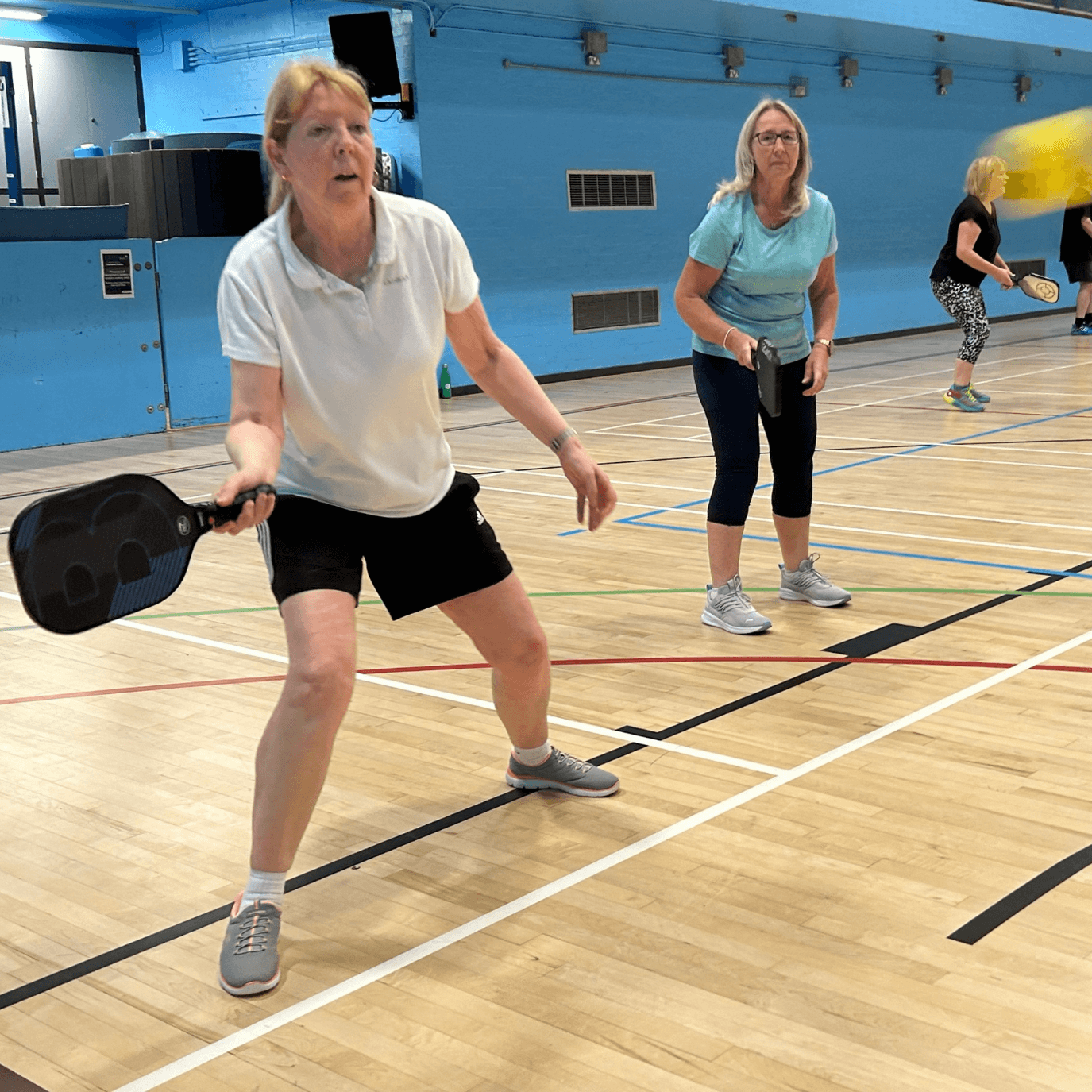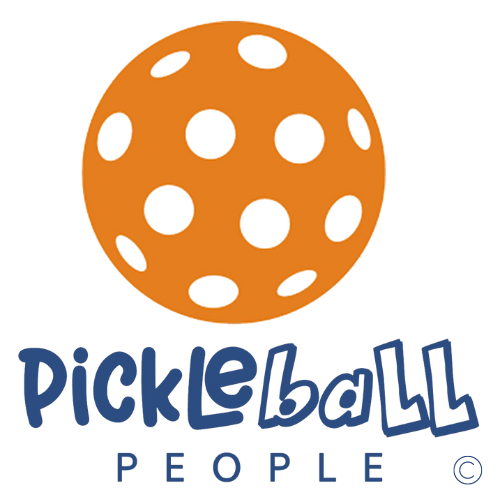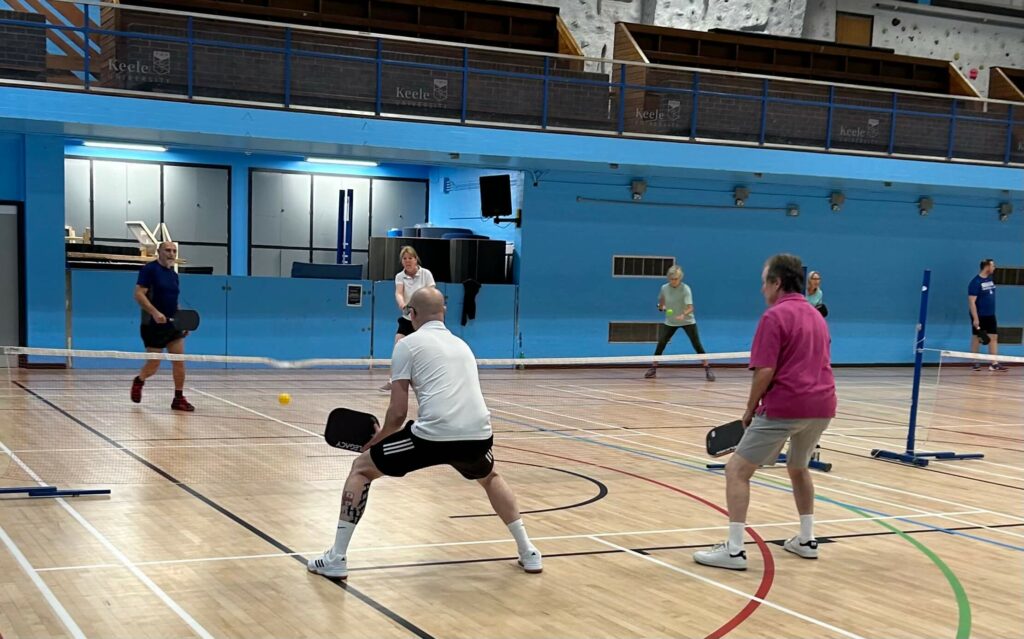WHAT IS PICKLEBALL?
Pickleball is enjoyed by people of all ages and athletic abilities due to its ease of play and straightforward rules. It combines elements of tennis, badminton and table tennis and is inexpensive, social and great exercise!
Played with a paddle and a plastic ball on a badminton-sized court with a low, tennis-style net, it can be played in singles or doubles format. A non-volley zone (or kitchen) prevents volleys close to the net. From the serve, the ball needs to bounce on both sides of the net before a player can volley. Players take it in turns to serve until they ‘lose their serve’ and points can only be scored ‘on serve’. The first to 11 (by 2 clear points) wins – it’s as simple as that!
Been to my first pickleball session this afternoon and thoroughly enjoyed it. I've played tennis for a number of years in all weathers and temperatures, but being slightly unfit after a break of a few years it was great to be able to play a racket sport indoors on a smaller court and feel like I had a good workout without being blasted off the court! It's a great, quick paced but manageable fun game that makes you smile, think I've been pickled!
Did you know?
Pickleball is the fastest growing sport in the USA, with 35 million people playing the game last year. Nick Kyrgios and Naomi Osaka are among many current and ex-tennis players that are investing in America’s Major League Pickleball. Bill Gates, Leonardo DiCaprio, George Clooney, the Kardashians, Will Smith and Ellen DeGeneres all play Pickleball.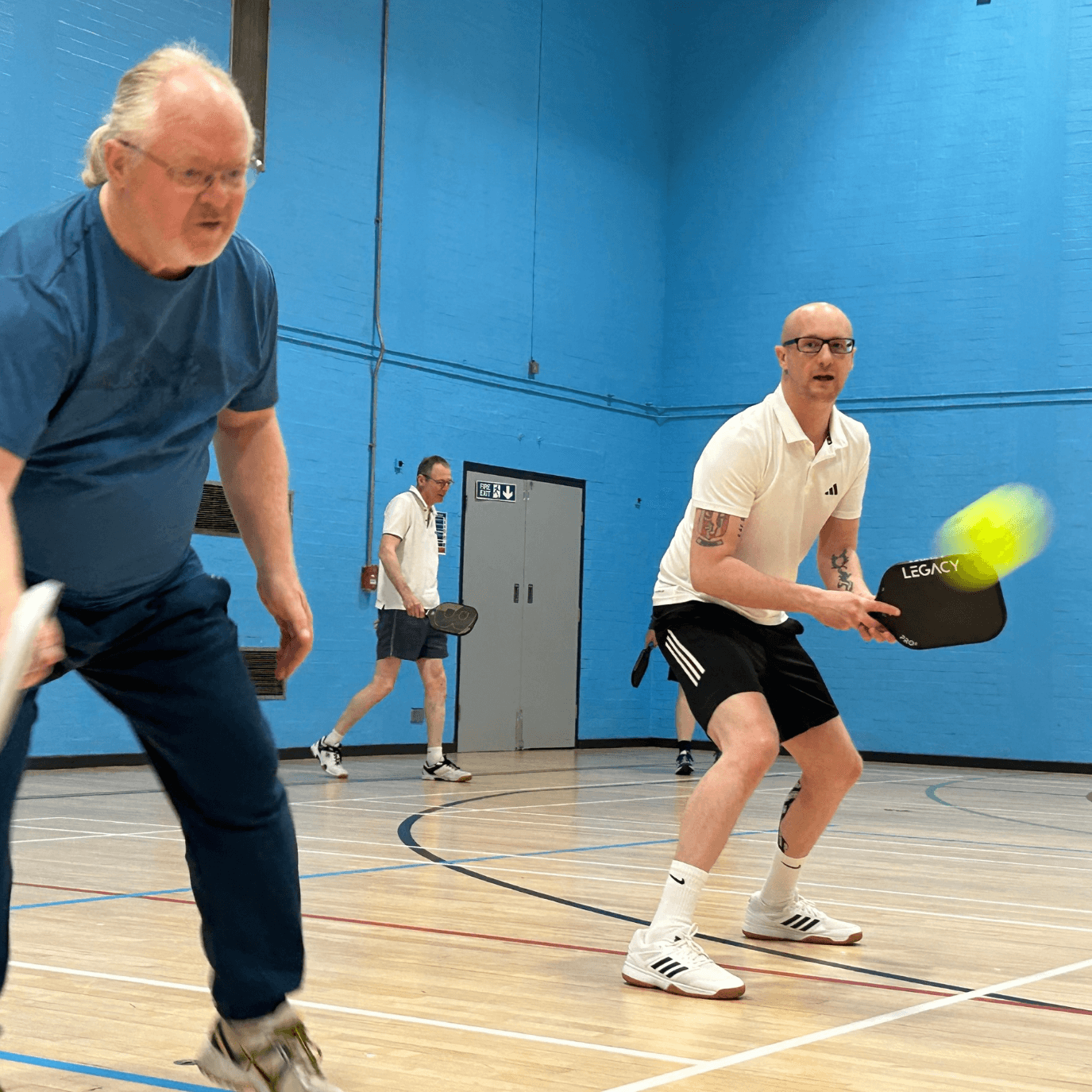
HISTORY OF PICKLEBALL.
Pickleball was invented in 1965 on Bainbridge Island in America. It was designed to be a sport that the whole family could enjoy regardless of age and athleticism. ‘Pickles’ was the family dog who would chase after the ball and hide it in the bushes, hence the name.
Initially, families played informally in their backyards but as the sport grew in popularity, the rules were formalised in the mid-1970s. Today, Pickleball is one of the fastest growing sports in the world. Last year, it was played by over 35 million Americans and 6.5 million Brits!
THE PICKLEBALL PADDLE.
The paddle is like a table tennis bat in that it is solid and easily manoeuvrable with a turn of the wrist. When pickleball was invented, wooden paddles were used. Today, paddles are made of materials, including carbon, graphite and fibreglass. Paddles are roughly 8” wide and 15” long with hard, smooth surfaces.
Pickleball People offer a range of paddles to suit your budget and preferences. Do not hesitate to contact us if you have any questions or are seeking advice on the right paddle for you.
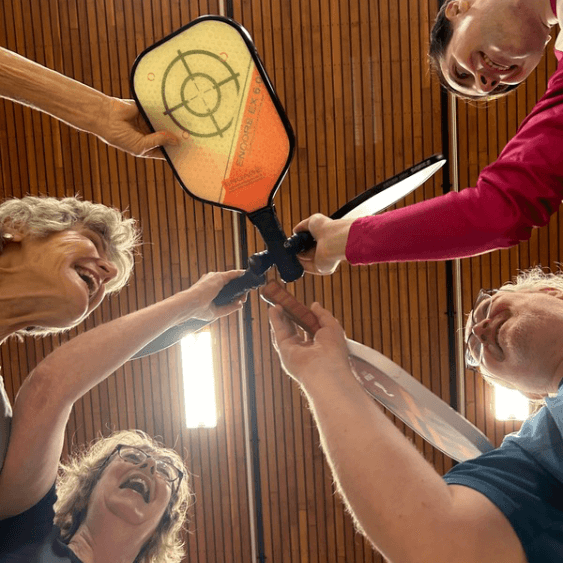
CHOOSING YOUR PICKLEBALL PADDLE.
LIGHT PADDLES
Lighter paddles are ideal for touch players who dink and prefer drop shots. They are a popular choice among doubles players.
HEAVY PADDLES
Heavier paddles generate more pop on the ball and are preferred by players who like to hit the ball hard (at the expense of some control). They are a popular choice among people who play singles where power is more important than finesse.
MIDWEIGHT PADDLES
Midweight paddles are a good combination of power and control.
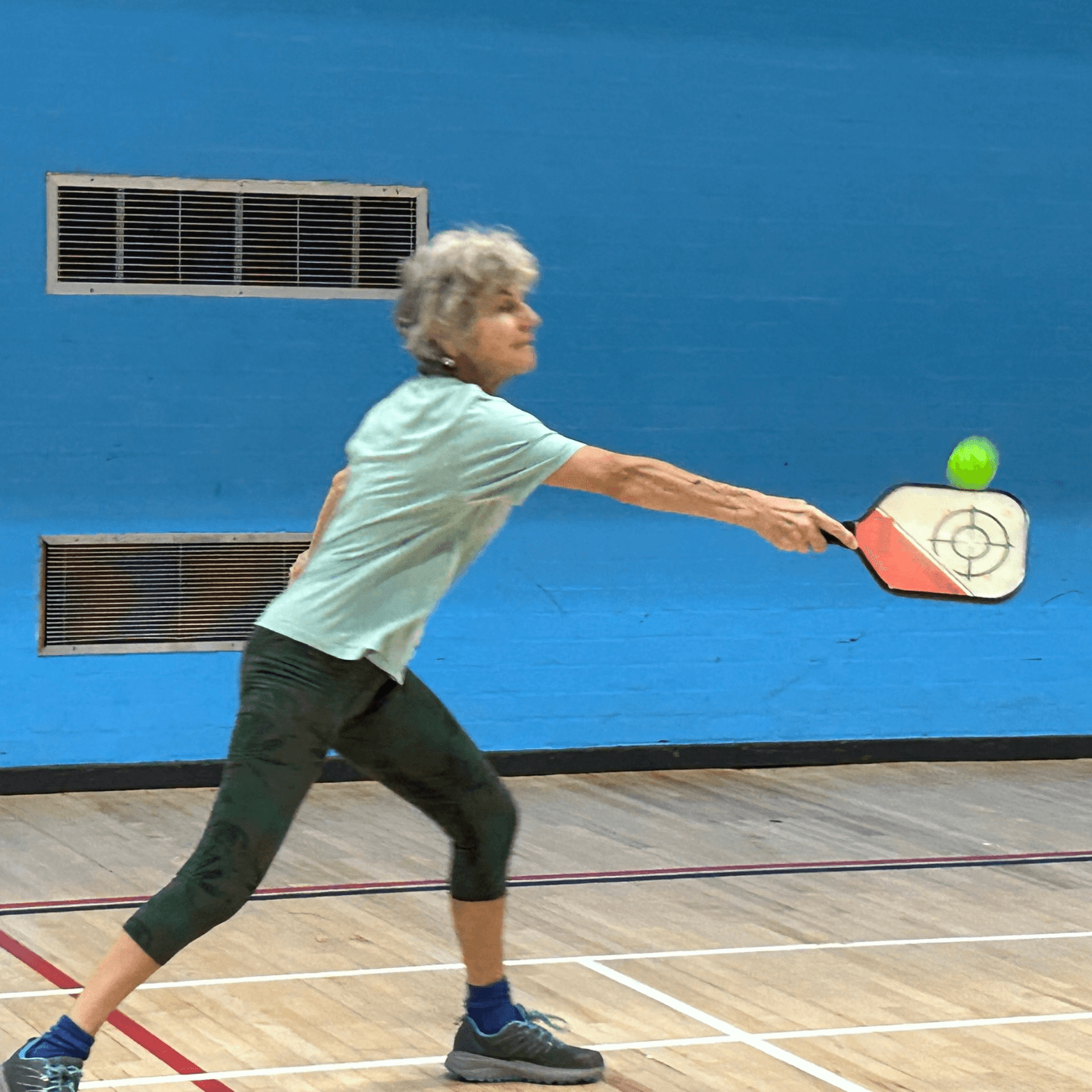
THE BALL.
Pickleball uses a hollow, perforated plastic ball, similar in size to a tennis ball. There are currently no rules governing what type of ball is played indoors or outdoors or the colour of the ball. ‘Indoor’ balls have (circa 26) holes, are made of hard plastic and have a slight softness to them. ‘Outdoor’ balls have more (circa 40) smaller holes and are slightly harder with thicker walls.
Pickleball People offer a range of indoor and outdoor balls by leading pickleball brands.
THE SHOTS.
The three important shots in pickleball are:
SERVE
- Serves must be made underhand.
- Paddle contact with the ball must be below the server’s waist.
- The serve is made from behind the baseline.
- The serve must land in the opposite diagonal court, between the non-volley line (also known as the kitchen line) and the back line.
- Only one serve attempt is allowed.
- The server cannot spin the ball out of their hand. Spin can only be applied to the ball by contact with the paddle.
THIRD SHOT DROP (LONG DINK)
- Guess what? This is the third shot in a rally, hence the name!
- It is an essential shot in pickleball, but it is also the most difficult to master.
- The mechanics of a third shot drop are almost identical to the dink, but it is hit by the serving team from the back of the court.
- Like a dink, it is a controlled, soft shot, where the ball lands in the non-volley zone (also known as the kitchen) on the opposite side of the court, making it unattackable.
- The third shot drop gives you time to move up from the back of the court to the non-volley line (also known as the kitchen line) and take an offensive position.
- The apex of a third shot drop (or highest point on the arc of a shot) should be higher and further away from the net than for a dink, but it will have the same effect of neutralising your opponents
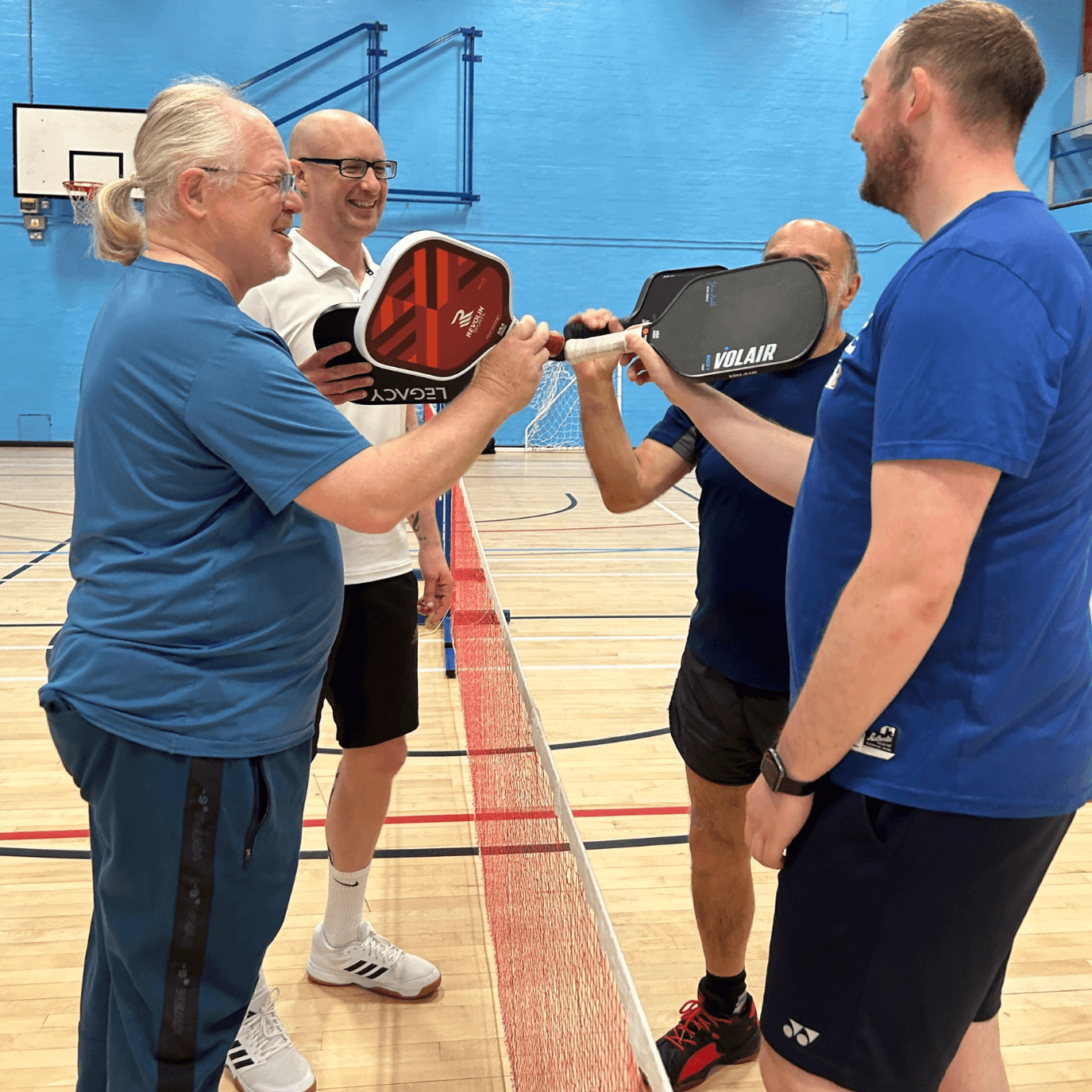
THE SCORING.
- Points are scored only by the serving team.
- Games are played to 11 points. The winning team must win by 2 clear points.
- The server shouts out the score before they serve.
- In doubles, the score is made up of three numbers (for instance, 0-0-2). The first number represents the serving team's score. The second number represents the receiving team's score. The third number represents the server number, which is either server #1 or server #2.
- When the serving team’s score is even (0, 2, 4, 6, 8, 10) the player who was the first server in the game for that team will be in the right-side court when serving or receiving; when odd (1, 3, 5, 7, 9) that player will be in the left-side court when serving or receiving.
THE PICKLEBALL COURT.
Pickleball is played on a court that is the same size as a badminton court (i.e. 20 feet wide by 44 feet long). The net is set at 36 inches high on the sides and 34 inches in the middle.
Pickleball's small court allows players of differing mobility to participate. Additionally, a rule prohibiting volleying (i.e. hitting the ball in the air) in the non-volley zone (i.e. the area 7 feet from the net) helps to equalise play and reduce overpowering smashes at the net.
